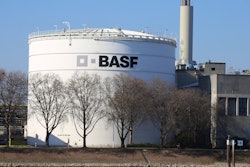
After extensive modifications carried out by AMCS, a new Helium Processing facility at DBK Helium Field in Arizona has commenced operation. The AMCS design plant will allow processing of up to 411 MCFPD of 98.8 percent purity helium. Nasco commenced trailer filing from this plant week starting January 29th, 2019.
The commissioning of this plant concludes our development strategy that we designed in late 2016 to more than double our helium production from the field.
NASCO CEO Jan Warstat stated, "We are extremely pleased to see this plant come online as it represents a significant milestone of our business strategy and firmly establishes Nasco as an important player in the worldwide Helium market."
NASCO Energie & Rohstoff AG has been making targeted investments to expand their helium activities since 2014. Previously, their helium production focused solely on a site in Arizona with the Navajo name Dineh-bi-Keyah (DBK), which is located in northeast Arizona, an area known as the Four Corners region. What makes the DBK field so remarkable is that its raw gas has an above-average helium content of more than five percent, a rare global occurrence. In comparison, the gas starts being economically worth extracting when it has a helium content of 0.5 percent.
NASCO is the controlling shareholder of the DBK helium field in Arizona and holds 60 percent of the permits and controls 80 percent of the Operating Company, Capitol Operating Group, LLC.
Increasing Global Demand for Helium:
Global demand for the noble gas helium is increasing, yet its availability on this planet is limited. This is driving helium prices up. The USA is the biggest market for helium, followed by Asia and Europe. Helium has many commercial and scientific uses worldwide, primarily in cryogenics as a coolant for very low temperatures (e.g., for cooling superconducting magnets for MRI scans), as a material used in welding and cutting, as a tracer gas for leak detection, as a compressed gas to deploy automobile airbags, as a lifting gas for airships and balloons, and also as a component gas of breathing mixes for divers. In addition, it plays a decisive role in researching new technologies.






















